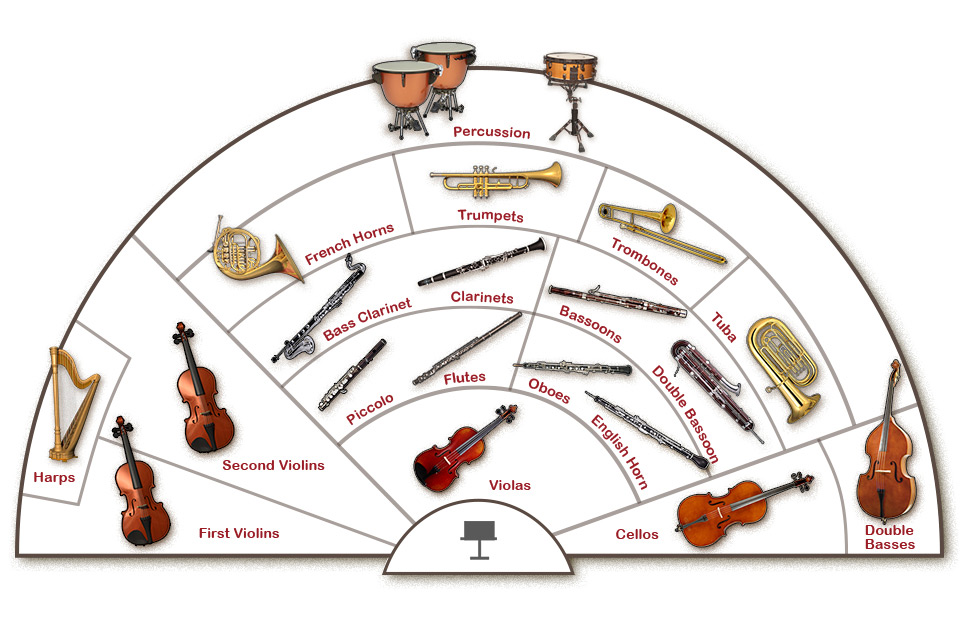The Symphony Orchestra
The Young Person's Guide to the Orchestra
Benjamin Britten
Born: 1913 Died: 1976 Period: Contemporary Country: EnglandThe Young Person's Guide to the Orchestra, one of the best-known works by British composer Benjamin Britten, offers a sonic tour through the different instruments of the orchestra. The piece begins by introducing listeners to the sounds of the orchestra as a whole before going one by one through the instrument families.
In 1946, Britten wrote The Young Person's Guide for an educational film introducing the instruments of the orchestra. The theme—taken from music that Henry Purcell (1659–1695) wrote for Aphra Behn's play Abdelazar (or The Moor's Revenge)—is played six times. First, the full orchestra plays the theme, followed by the woodwinds. The theme is played a third time by the brass, a fourth by the strings, a fifth by the percussion, and finally by the full orchestra once again. Considering that they are not tuned instruments, the percussion does an admirable job with the melody before the return of the full orchestra.
Listen again to the theme played by the whole orchestra, and then take a closer look at the instrument families that subsequently repeat this theme. Because the instruments play variations on the same piece of music, this is a wonderful way to train your ear to distinguish between the orchestral timbres.
Interactive Seating Chart of the Traditional Symphony Orchestra
This diagram shows the traditional position of the different instrument families when they get together to form a group called the symphony orchestra. Click the instrument groups in the seating chart to listen to the music examples.

A traditional symphony orchestra may consist of more than 100 players. The players are distributed according to the plan shown in the figure above. Included are representatives of four families of instruments: strings, woodwinds, brass, and percussion. Although not pictured, occasionally a fifth family, the keyboards, appears as part of the symphony orchestra.
The first variation begins with the woodwind instruments: the piccolo and two flutes, accompanied by the harp and violins. The oboes are given fuller accompaniment, leading to the clarinets that demonstrate their agility, and then to the deepest instruments of the woodwind section, the bassoons. The string section is allowed four variations: the violins, the viola, the cellos, and the double bass, with an appearance finally by the harp. The French horns introduce the brass section; followed by the second variation for trumpets and the third for trombone and bass tuba. The percussion instruments share the next variation. The kettledrums (timpani) are joined by the bass drum and then the cymbals, tambourine, triangle, side drum, and Chinese block. Finally, the xylophone, castanets, gong, and the whip, simulated by hinged slats of wood, are smartly brought together.
The Young Person's Guide ends with a fugue, a traditional form of composition in which one part enters after another using the same theme, such that the music grows gradually in size and intensity. The piccolo starts and the other instruments enter in order. At the most exciting part of the fugue, the brass instruments replay the original theme, leading to a grand conclusion.
